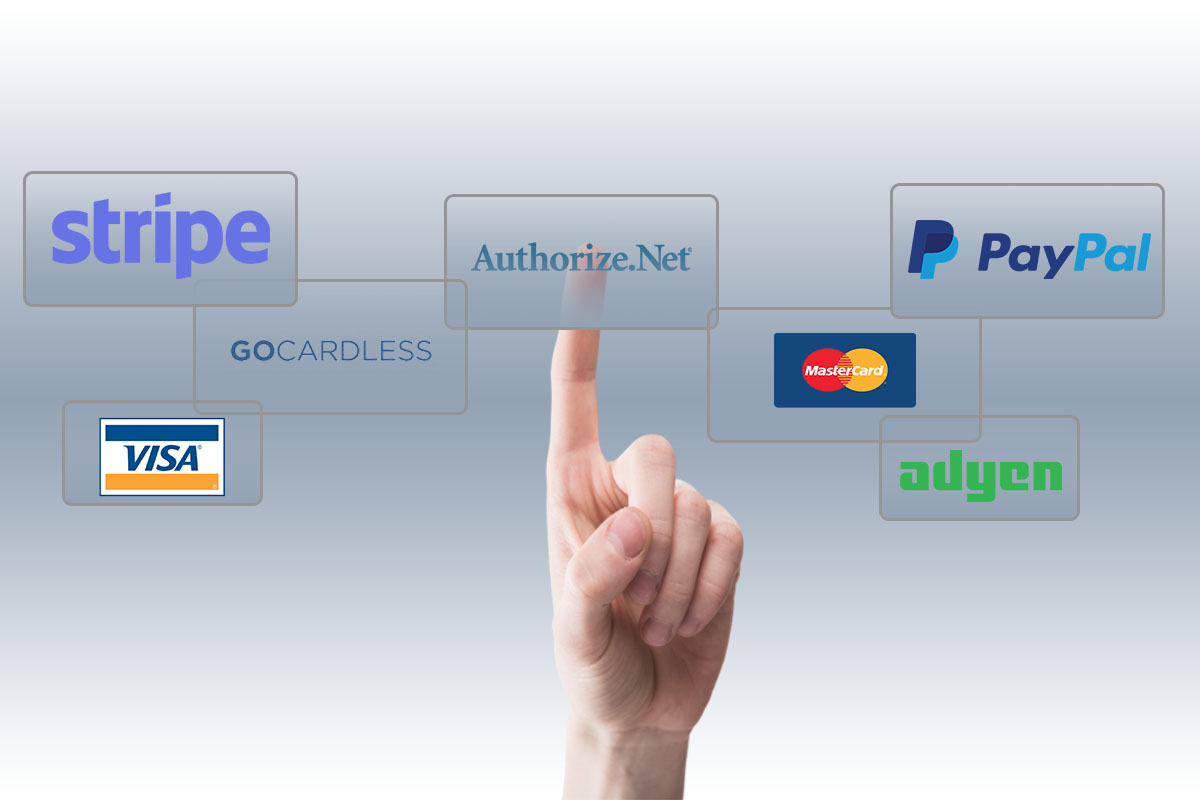
Explore ACH Payments: What They Are, How They Work
Customer or vendor—easy, safe, and instant payment processing is all, everyone needs. Using online payment, transfers are of various types, but the most used one is ACH. From online bill payments through the bank accounts to transferring funds from one bank account to another to receiving money into accounts via direct deposits, all are the examples of ACH Payments.
ACH payments are saviors for businesses as well. ACH payments have become an alternate for checks and credit card payments. In comparison to both of the modes of the payments, they are faster, safer, and reliable. For receiving recurring payments, it is the best way to have more control and more savings for the transactions.
Let’s learn what ACH payments are, how do ACH Payments work, and how they are different from other electronic or non-electronic modes of payments.
First things First;
What are ACH Payments?
ACH stands for Automated Clearing House. ACH Payments are the electronic mode of funds transfer from one bank to another without using checks, credit card networks, wire transfers, or cash, in batches, and through the Automated Clearing House Network (ACHN).
ACHN is a financial network for electronic money transfers. It is a batch processing system that banks and other financial institutions use to process collective ACH transactions.
ACH transfers are cost-efficient and user-friendly ways to transfer funds, electronically.
Types of ACH Payments
ACH Payments are processed through Automated Clearing Network House Network in two to three working days. The processing time varies with the ACH Payments types. These are of two types:
Direct Deposits
The ACH Direct Deposits are the electronic funds transfers that are made by a business to any institution—government, another business, or individual customers. The ACH Direct Deposits can be made using Paychecks, Government Benefits, Tax Refunds, Interest Payments, and others.
Direct Payments
Paying a bill online, sending money from one bank account to another, sending payments via PayPal, Stripe, Braintree, and other social payment apps, and more are the prime examples of the ACH Payments. Individuals, businesses, organizations, and governments, and other entities use ACH Payments for reliable and controlled-payment transfers.
Types of ACH Transfers
In ACH Direct Payments, the ‘Sender’ refers to the ‘Debit’, whereas the ‘Receiver’ is ‘Credit’. The Debit pulls the money out of the system and the credit pushes the money back to the system.
Based on debit and credit, ACH transfers can also be categorized into the following two types:
ACH Debit Transactions
ACH debit transactions are when customers authorize the merchant, vendor, or any entity to pull the money out of the account, periodically.
ACH Credit Transactions
ACH credit transactions are when the money pulled from any bank or any other financial system will be pushed into merchant’s accounts or any other account owned by anyone.
The Rise of ACH Payments
Today, most of the electronic fund transfers are ACH payments transfers. According to the National Automated Clearing House Network Association, the volume of the ACH transactions rises steeply in the last few years.
In 2016, more than 25 billion electronic payments, comprises of $43 trillion, are made which is an increase of more than five percent in comparison with 2015.
The volume has further shown a surge in growth by the end of 2017. A 9.5 percent increase has seen by the end of the third quarter of 2018 which mounted the transactions up to $51.2 trillion.
The same-day processing of ACH Payments influx more money into the system. The speed of the transaction with safety and reliability multiplies the volume of ACH Payments manifold since 2008.
The ACH Payments Network
In addition to Automated Clearing House Network—the connecting body for the financial institutions in the United States, some other players are also involved to make the system work. These are:
ODFI—The Originating Depository Financial Institution
The process of ACH payment transactions begins with ODFI. It is the side of a bank that is responsible to give access to a bank account to initiate the process of ACH-based electronic funds transfer. ODFIs are also called ACH Processors.
Not all banks are ODFIs. Some act as ODFI to deal with the high volume of ACH Payment requests. Instead of forwarding the ACH Payments for processing to the RDFIs, they accumulate these ACH requests to process them later. This is how the batch processing works. And, this is why it sometimes makes the ACH payments processing slower as well as safer, too.
RDFI—the Receiving Depository Financial Institution
It is the other part of the banking institution that receives the ACH request and allows the transfers to be made into the receiver’s banking account as credit.
NACHA—The National Automated Clearing House
It is the regulatory body that is responsible to supervise and govern the whole ACH network of bank-to-bank transferring and receiving funds, electronically.
The Processing of ACH Payments in ACH Network
Phone, broadband, OTT, insurance premium, magazine subscriptions, subscription box service, or any, subscribing to any autopay requires a customer to provide account information and sign a recurring payment authorization.
At every billing cycle, ODFI sends a payment request to the RDFI to transfer the funds, using the ACH network. The two bodies then confirm the availability of funds and then process the payments.
The process money then gets received into the merchant’s accounts.
The Duration of the ACH Payment Processing
ACH Payments usually take multiple business days to process the payments from ODFI to RDFI.
NACHA allows ODFI banks to process same-day payments or process payments in 2 to 3 business days. Likewise, RDFI can hold the payments, particularly ACH credit transactions, for a certain duration. Though, ACH debit transactions can, not only be processed in the next working day but also, can be made three times a day.
The same day ACH Payments trend is on the rise. The same-day ACH payment increases the overall volume of the ACH Payments in the last 2 to 3 years quite effectively.
The Cost of ACH Payment Processing
ACH Payments are considered the cheaper way to process the bank-to-bank money, electronically. It empowers ODFIs to choose the processing charges.
These ACH processors can charge a flat rate as a processing fee or it can be varied with the amount of the ACH payments. The ACH Payment processing can also cost as a percent of the ACH payment.
It all depends on the businesses to select an ACH processor.
The Security of ACH Payment Processing
ACH Payments do not follow the same PCI compliance guidelines required for the credit card payment processing but it ensures that all parties involved in the ACH payments network implement the rules to secure the banking information throughout the process and at every transaction point.
It also includes sending the encrypted mode of transmission of ACH payment transaction information. The originators of ACH Payments are required to ensure customers’ validity and account routing number to prevent online fraudulent payments.
This could lead to ACH Payment rejection.
The ACH Payment rejection may incur a penalty to the ACH payment originator.
The Rejected ACH Payments
Upon rejection, the ACH payment originators would be provided with a reject code to learn why there was a rejection. Some of the most common reasons for rejected ACH payments include;
- Insufficient Funds in the payee’s account
- Payee closes the bank account
- Suspicious or unmatched account number or non-existent account
- Restricted access to the account to withdraw the funds
The ACH Authentication—Avoid Rejected ACH Payments
It is the responsibility of the ACH processor to verify the existence of the account and the availability of sufficient funds in accounts to mitigate the risks of being rejected for the ACH payment transfers.
NACHA allows the verification via these ways;
- Micro Deposits
- Verifying the receiver account with a zero-dollar transaction
- Account Verification
- Debit Card Authorization
- Authenticating the account number with the database
The Limitations of ACH Payments Transactions
The electronic bank-to-bank funds’ transference via the ACH Payments Network is an easy, simple, convenient as well as safer way to process the controlled inter-bank funds’ transaction. However, to keep the process secure, there are also a few restrictions that bar heavy external funds processing. Some of these are:
- Limited or Capped Amount of Transaction
- Business Day only processing
- Charges for rejected ACH payments due to insufficient funds
- Restricted or no International funds transfers
- Limited transfers
- US-based only
Difference between the ACH Transfers, Wire, and Other Funds Transfer
ACH payments are one of the electronic bank-to-bank funds transfer modes. But, it is different in many ways than other electronic funds transfer.
Electronic funds transfers or ETF include wire transfers, payroll direct deposits, credit card transactions, debit card transactions, e-check payments, online payments, and mobile payment transfers.
But, the most popular ETFs are ACH, wire, credit card, debit card, and cash transfers for bank-to-bank as well as business payment transfers:
Let’s have a quick look at why and how ACH is different from the above-mentioned ETF;
ACH vs. Wire Transfers
ACH Transfer allows the payments to send to RDFI in batches through the Automated Clearing House, whereas in the wire transfers, there is no regulatory body in the middle, and the banking institution themselves work as the middle man.
To understand more about the differences and similarities between the two, we have compiled a comparison table between ACH payments and Wire Payments that will give the readers a deep and quick understanding of how these two works and what works best for your transaction objectives:
ACH vs. Credit Cards
Credit Cards are relevant, safer as well as faster ways of transactions in some ways and, particularly, for one-time payment processing. But, it may incur more transaction fees as compare to ACH payments.
Below is a comparison table between ACH transfers and the credit card transfers to allow readers to compare and select the best fund transfer mode as per their needs and resources:
ACH vs. Debit Cards or Cash
ACH payments in many ways are safer and reliable as compare to debit card transactions and cash transfers. Debit card transactions are electronic mode and are faster but you cannot hold the transactions once they are processed. Besides, debit card transactions incur more costs and have limited dispute resolution policies.
And, as compare to cash payments, ACH payments are faster as well as the controlled mode of payment transfers.
ACH Payments for SaaS—The Next Frontier in Secure Recurring Payments
ACH Payments are the ideal mode of payment transfers for the SaaS as most businesses are working on the subscription-based model which requires customers to subscribe to the services for a defined term and based on recurring payments after every interval or when hit the billing cycle.
- ACH Payments are Cheaper
Through e-check and bank-to-bank online funds transfer with ACH payments allows businesses to save more on periodic billing on payment processing.
- ACH Payments are Safer
ACH Payments works under the supervision of a regulatory body, NACHA, and the federal government. All the parties are required to essentially abide by all the regulations of financial and digital security, information sharing, and payment transaction details encryption.
As it process in batches, it offers more hold over the transaction process.
- ACH Payments are Faster
ACH payments are now with the same-day and three-times transfers day rules have become one of the preferred reliable ways of electronic funds transfers.
- ACH Payments are Easier
ACH Payments establishes a recurring and automated system to process the ACH payments request and payment collection. It guarantees on-time payments without intimating emails, notifications, and reminders to the customers to deposit payments.
ACH payments also help businesses to consolidate the payments transactions and processing details for auditing and bookkeeping as well.
How to Set Up ACH Payments for Subscription Business
Subscription businesses are based on recurring billing and payment processing. Using a subscription management software is a great way to automate the whole subscription process—from automated invoicing to automated ACH payments to payment collection.
SubscriptionFlow allows businesses to integrate whatever the Payment Gateways they want that support ACH as well as credit card payments. Here, it is a step-by-step guide that will help you to choose the ACH payments and ACH Payment processors.
- Open a merchant account with the ACH Payment Processor.
- Integrate it with SubscriptionFlow
- Suggest the ACH Payments
- Ask customers to sign an ACH Authorization Form.
- Ask customers for their checking account, routing numbers, and other details.
- Submit and save information.
- Initiate the ACH Payments.
To learn more about the ACH recurring payments for SaaS Subscription businesses, talk to our expert, or request a demo. Explore the safer, faster, reliable, and easier ways of collecting payments and building recurring revenue, today!












